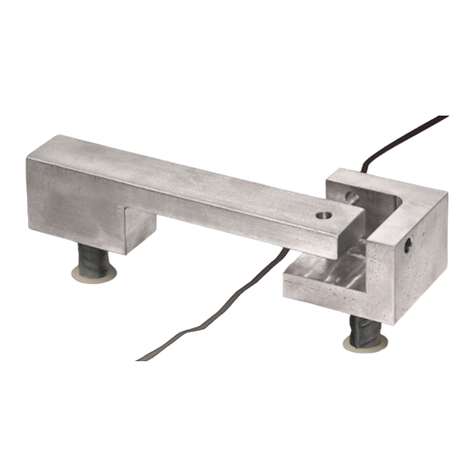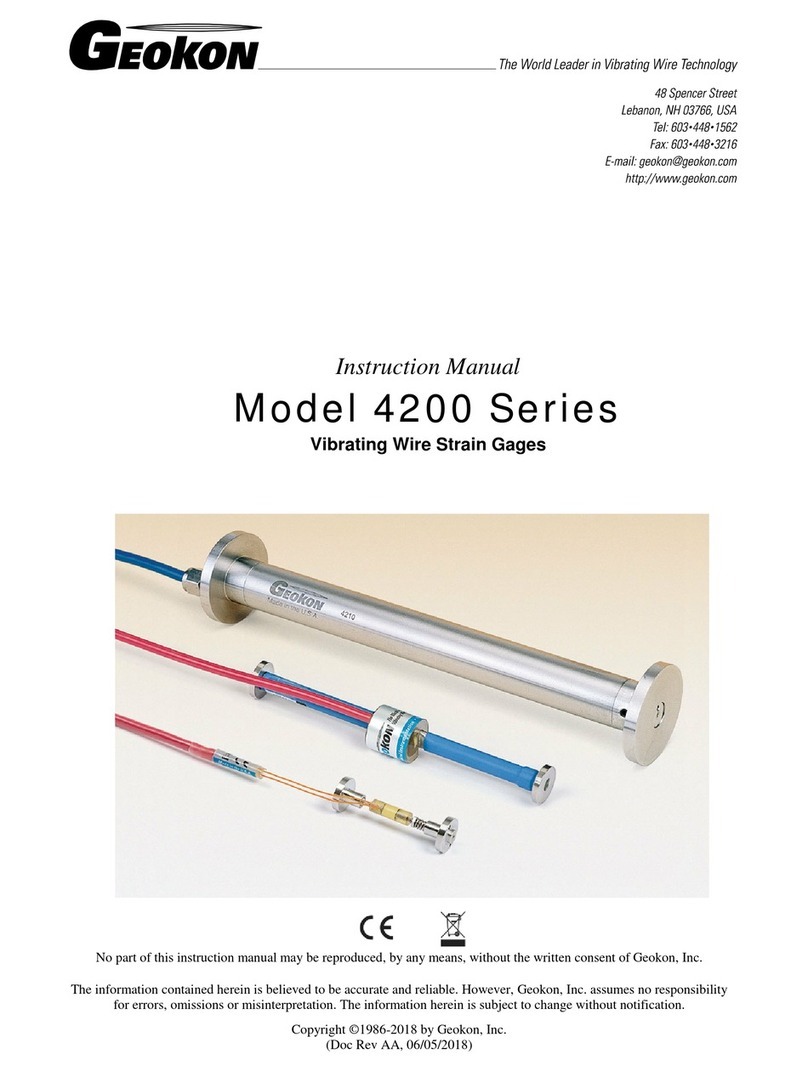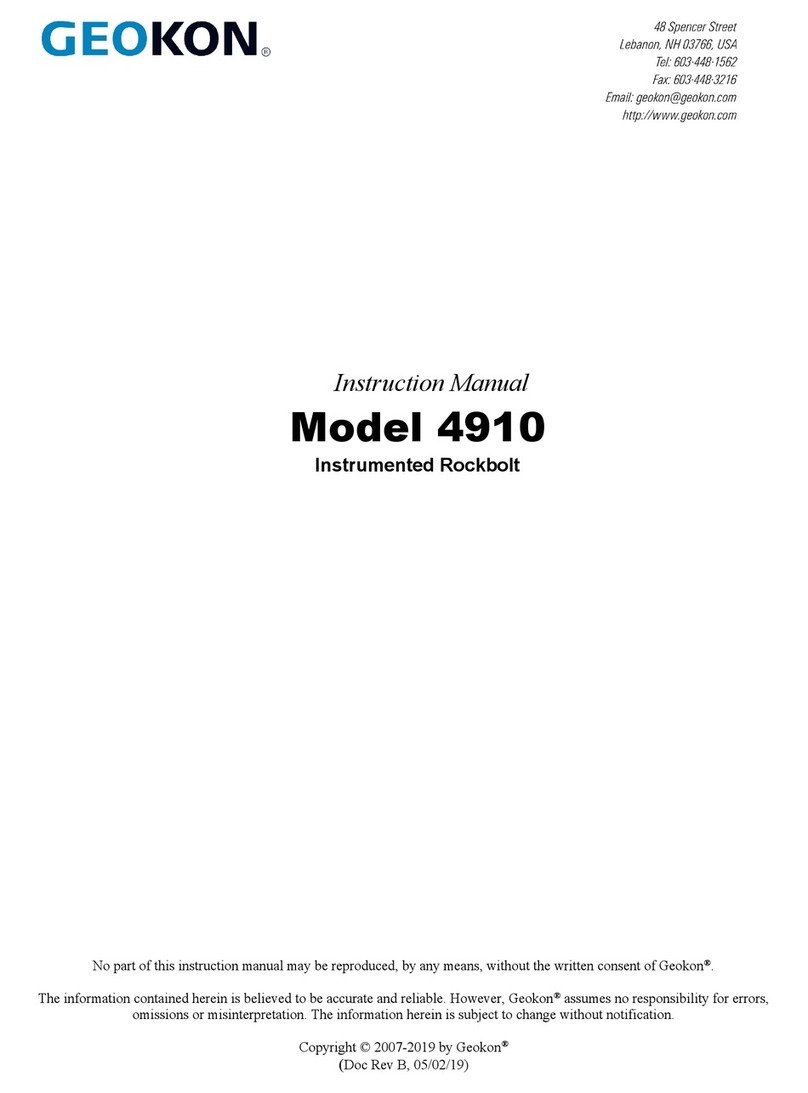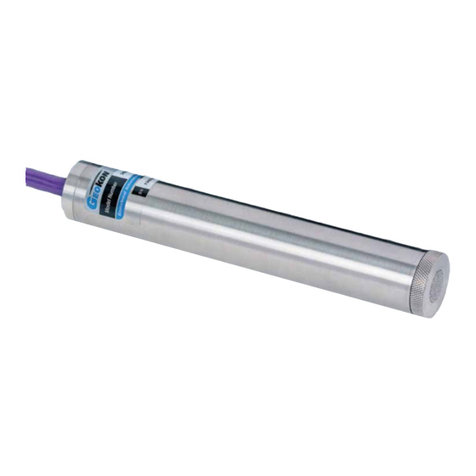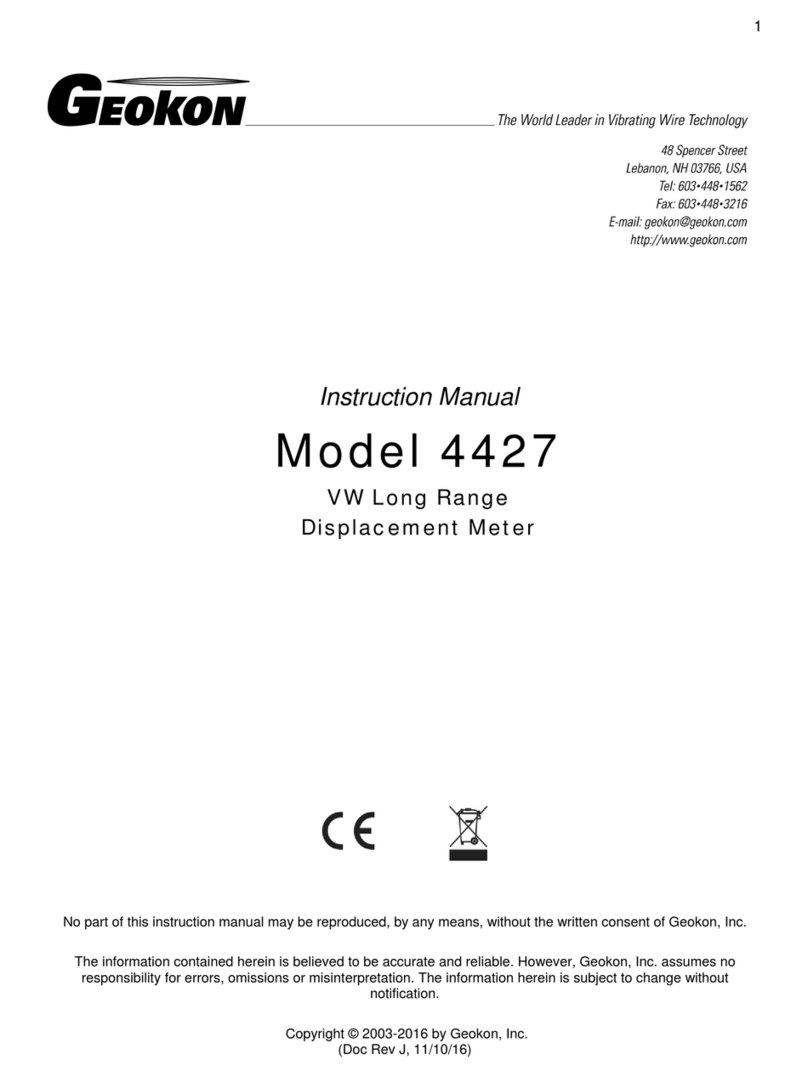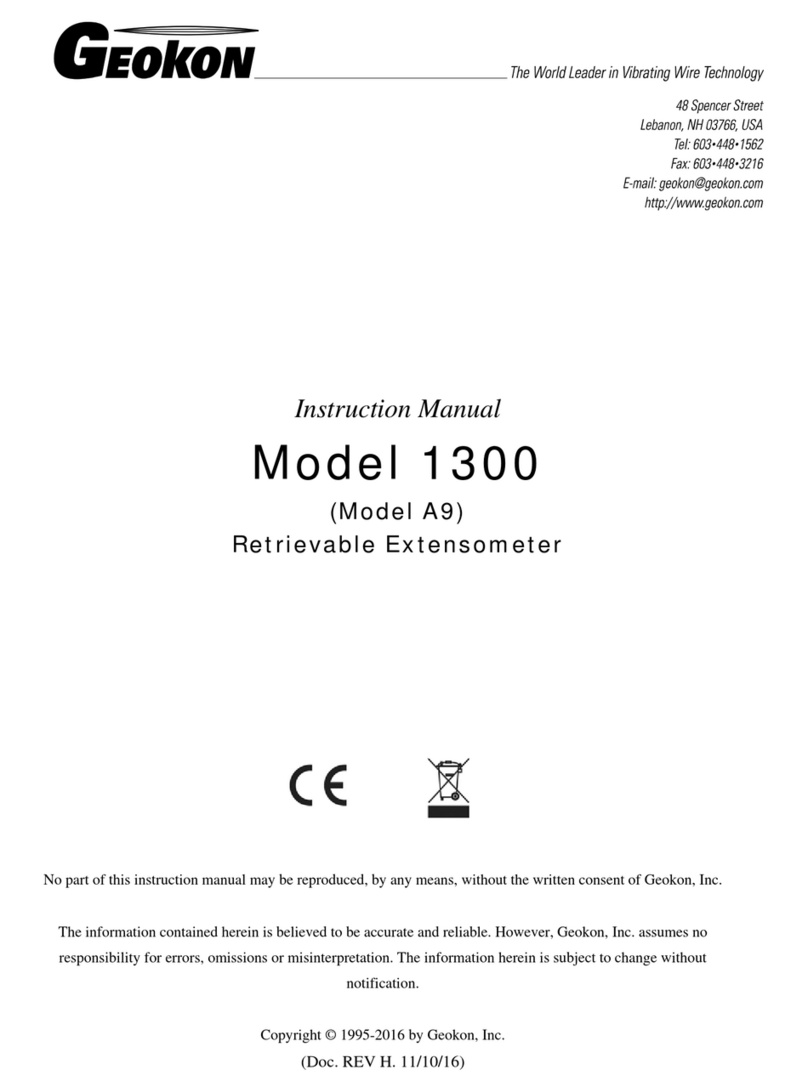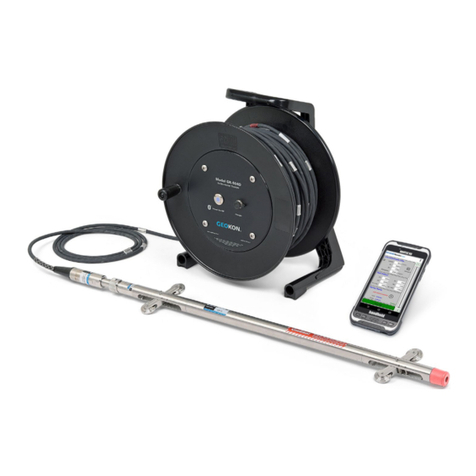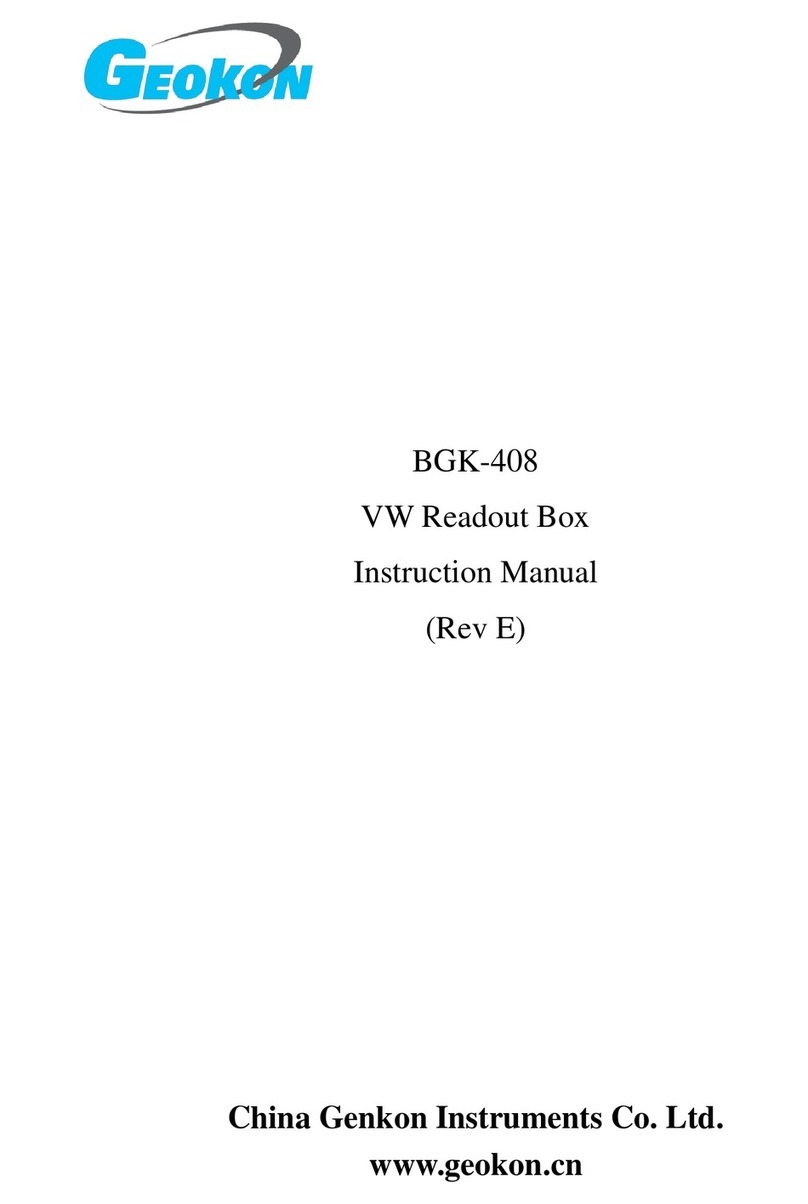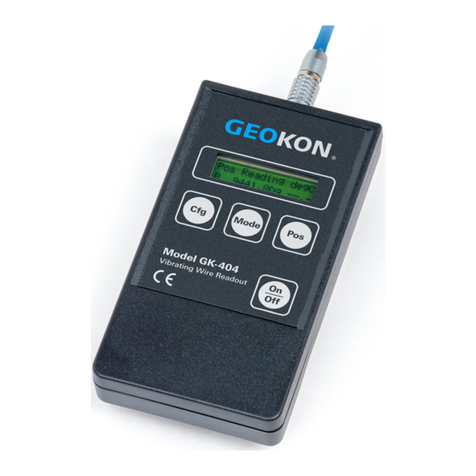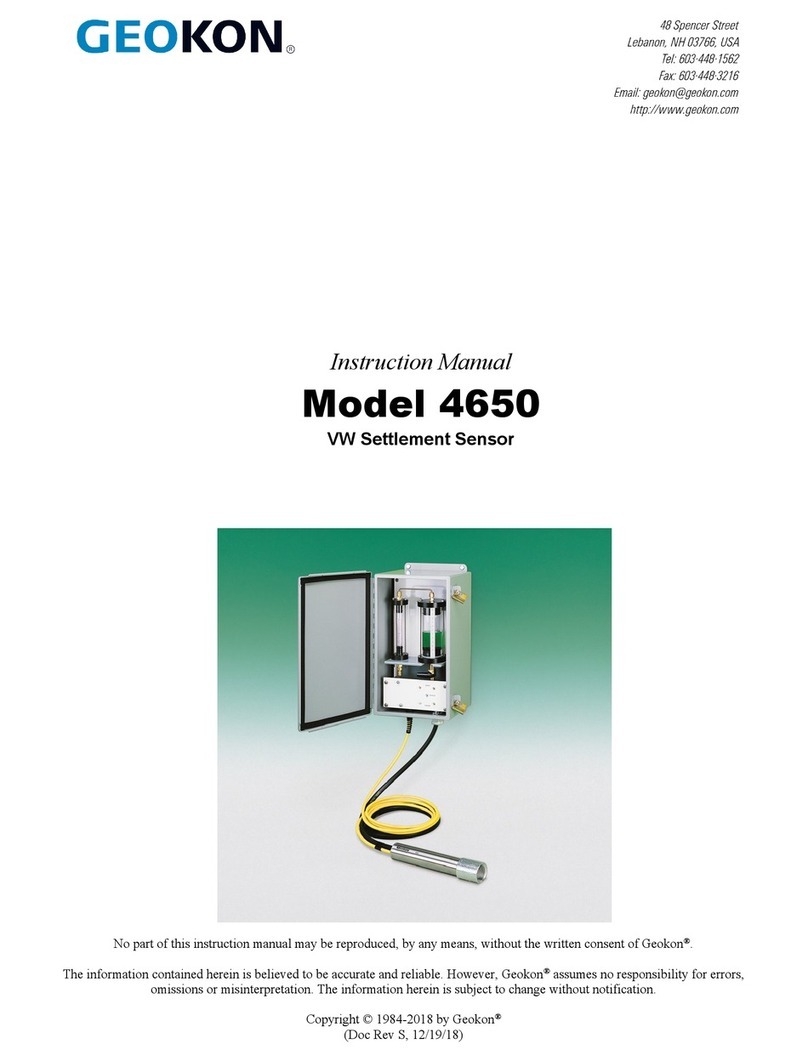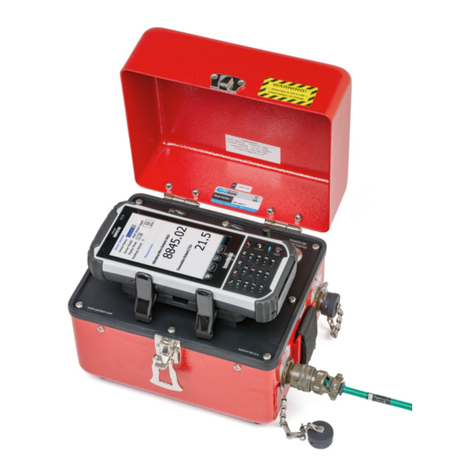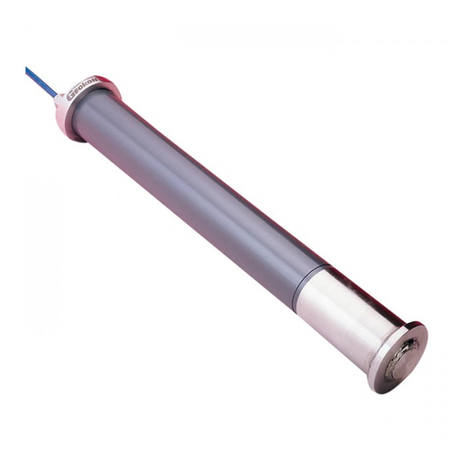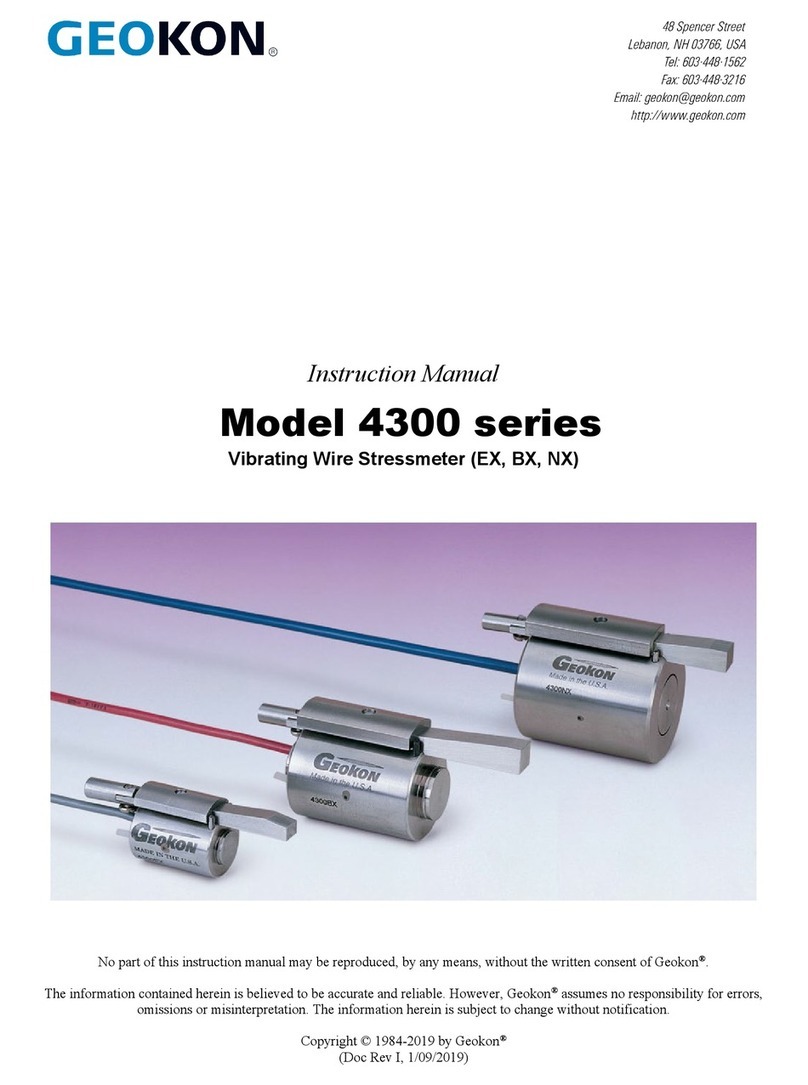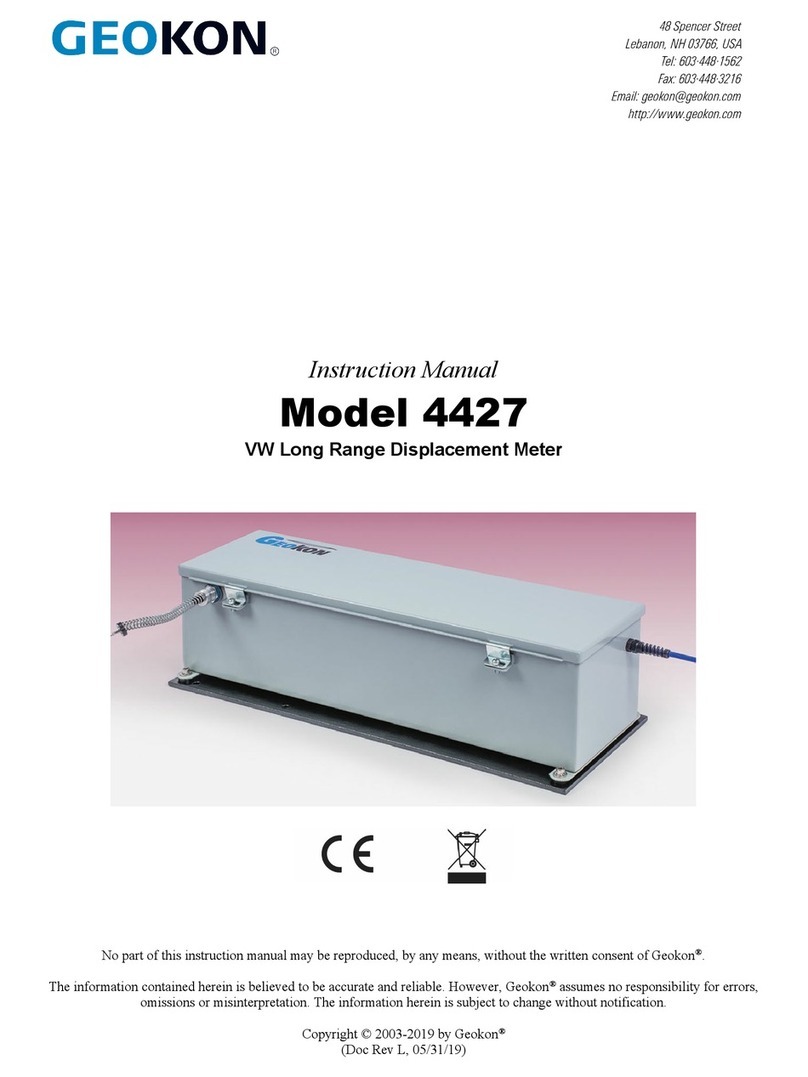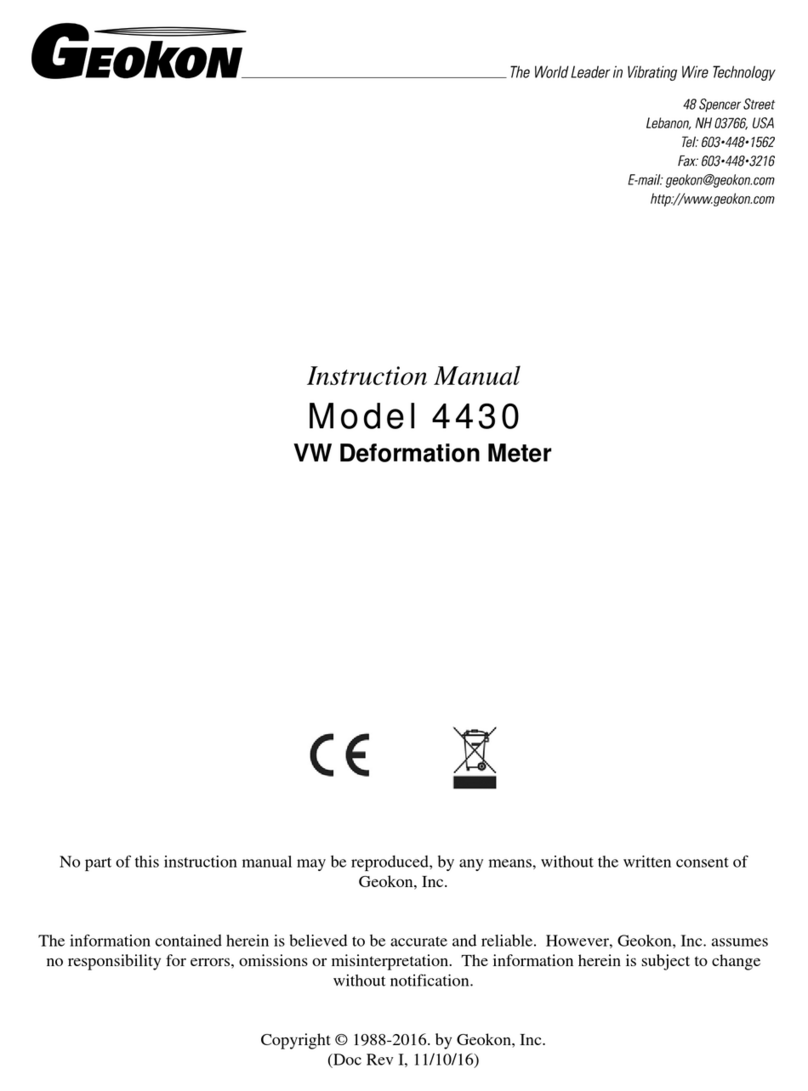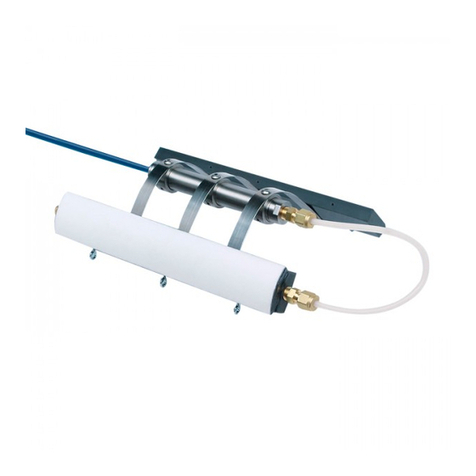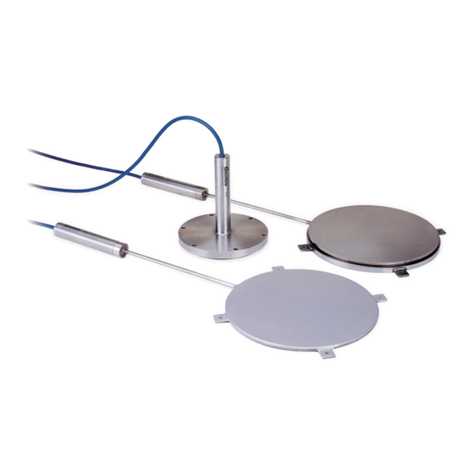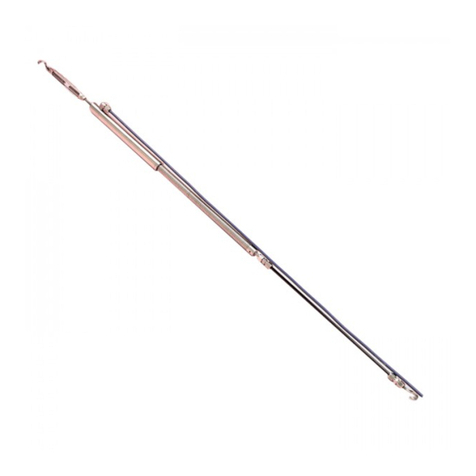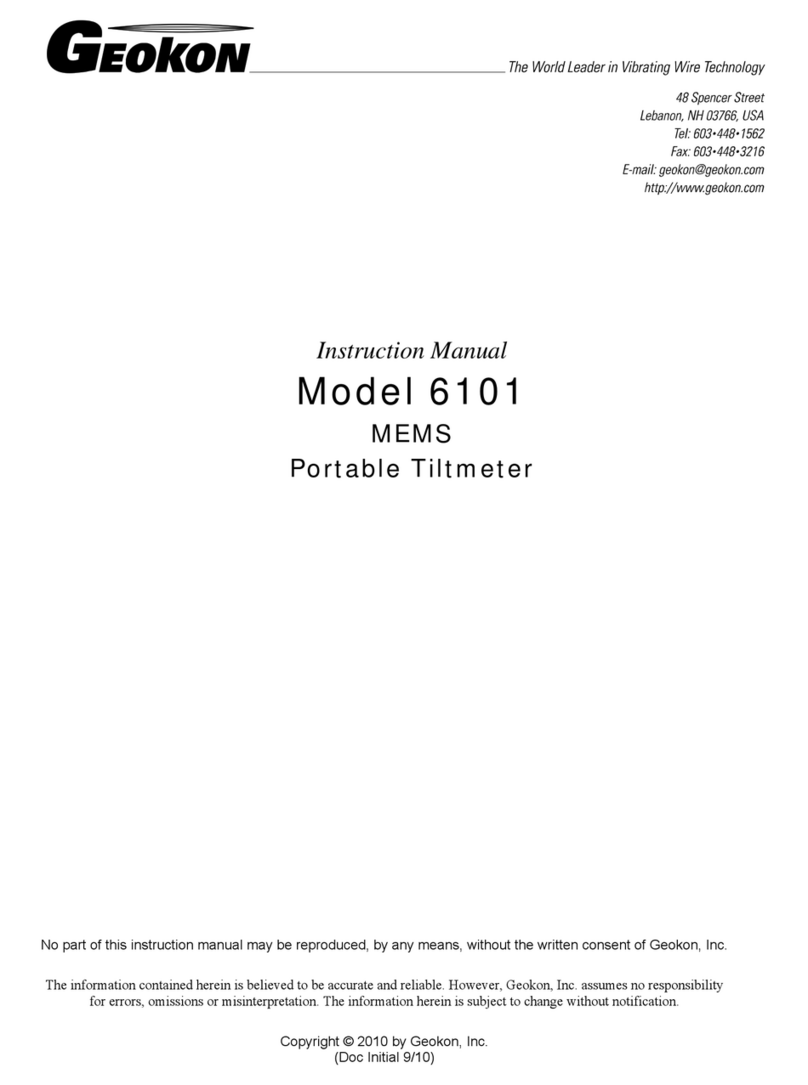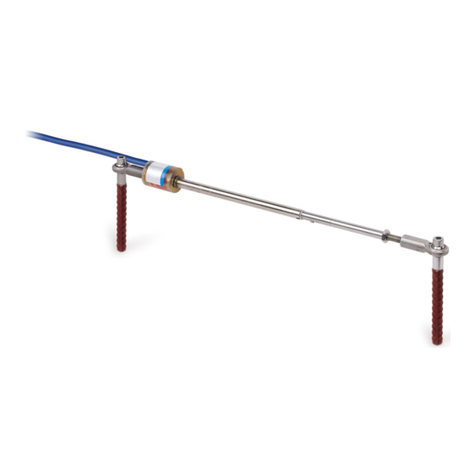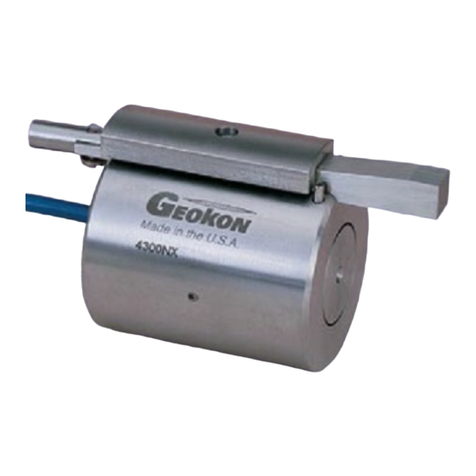
TABLE of CONTENTS
1. THEORY OF OPERATION ................................................................................................... 1
2. QUICK START INSTRUCTIONS......................................................................................... 2
3. PRIOR TO INSTALLATION................................................................................................. 2
3.1 SATURATING FILTER TIPS....................................................................................................... 2
3.1.1 Piezometers with low air entry (standard) filter housings.............................................. 2
3.1.2 Model 4500S equipped with option High Air Entry Ceramic Filter............................... 3
3.1.3 Model 4500C................................................................................................................... 4
3.2 ESTABLISHING AN INITIAL ZERO READING............................................................................. 5
3.2.1 Recommended method: ................................................................................................... 6
3.2.2 Alternative method 1:...................................................................................................... 6
3.2.3 Alternative method 2:...................................................................................................... 6
3.2.4 Alternative method 3:...................................................................................................... 6
3.3 CHECKING THE PIEZOMETER PERFORMANCE.......................................................................... 7
4. INSTALLATION...................................................................................................................... 8
4.1 INSTALLATION IN STANDPIPES OR WELLS............................................................................... 8
4.2 INSTALLATION IN BOREHOLES................................................................................................ 9
4.3 INSTALLATION IN FILLS AND EMBANKMENTS....................................................................... 12
4.4 INSTALLATION BY PUSHING OR DRIVING INTO SOFT SOILS................................................... 14
4.5 MODEL 4500H AND MODEL 4500HH TRANSDUCER ............................................................ 15
4.6 SPLICING AND JUNCTION BOXES........................................................................................... 16
4.7 LIGHTNING PROTECTION....................................................................................................... 17
5. TAKING READINGS............................................................................................................ 18
5.1 GK-404 READOUT BOX........................................................................................................ 18
5.1.1 Operating the GK-404................................................................................................... 18
5.2 GK-405 READOUT BOX........................................................................................................ 19
5.2.1 Connecting Sensors....................................................................................................... 19
5.2.2 Operating the GK-405................................................................................................... 19
5.3 GK-403 READOUT BOX (OBSOLETE MODEL)....................................................................... 20
5.3.1 Connecting Sensors....................................................................................................... 20
5.3.2 Operating the GK-403................................................................................................... 20
5.4 MEASURING TEMPERATURES................................................................................................ 21
6. DATA REDUCTION.............................................................................................................. 22
6.1 PRESSURE CALCULATION ..................................................................................................... 22
6.2 TEMPERATURE CORRECTION ................................................................................................ 24
6.3 BAROMETRIC CORRECTION (REQUIRED ONLY ON UNVENTED TRANSDUCERS) ...................... 25
6.4 VENTED PIEZOMETERS ......................................................................................................... 26
6.5 ENVIRONMENTAL FACTORS.................................................................................................. 26
